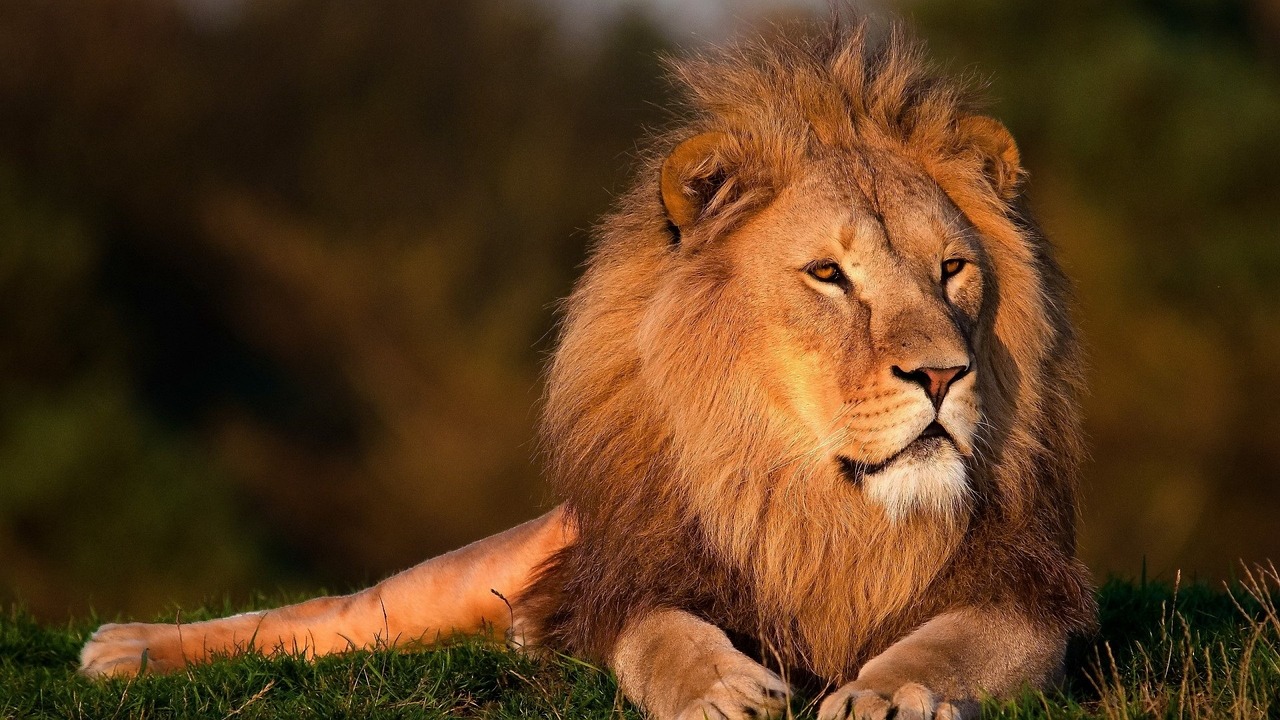If you’ve ever been fascinated by lions and the way they live, then you’ll be excited to learn about the latest research techniques being used in lion studies. In this article, experts in the field provide in-depth insights into the methods they employ to gather data and understand the behavior of these majestic creatures. From camera traps and DNA analysis to satellite tracking and acoustic monitoring, these innovative techniques are giving us a deeper understanding of lion populations and helping to inform conservation efforts. So, if you’re ready to uncover the secrets of the lion kingdom, keep reading to learn more!
Camera Trapping
Camera trapping is a widely used research technique in the field of wildlife studies. It involves the use of motion-activated cameras placed strategically in the natural habitats of animals to capture their movements and behaviors. The purpose of camera trapping is to obtain valuable information about the population dynamics, behavior, and habitat preferences of various animal species, including lions.
To set up a camera trap, you would first need to select the desired location based on your study objectives. This could be near water sources, game trails, or areas with recent signs of lion activity. Once the location is chosen, you can then mount the camera on a sturdy tree or a rock, making sure it is properly concealed and positioned at an appropriate height to capture the desired field of view.
Data collection from camera traps involves regularly checking and retrieving the memory cards from the cameras. These memory cards contain images or videos of the animals that have triggered the motion sensors. Researchers analyze these data to identify individual lions based on their unique coat patterns and markings. They can also estimate population size, study social interactions within prides, and monitor changes in behavior over time.
GPS Tracking
GPS tracking is a vital tool for studying the movements and behavior of wild animal species, including lions. By attaching GPS collars or tags to individual animals, researchers can systematically collect accurate location data over extended periods. This technique allows for the identification of home ranges, migration patterns, and potential conflicts with human settlements.
To track lions using GPS, researchers first need to capture and anesthetize the animals for a brief period. During this time, a GPS collar or tag is securely attached to the lion’s neck or leg. These collars are equipped with GPS receivers and other sensors, enabling them to record the animal’s location, speed, and even its body temperature.
Interpreting GPS data involves analyzing the movement patterns and spatial distribution of individual lions. Researchers can identify areas of high activity, potential hunting grounds, and interactions between individual lions or prides. The information gathered through GPS tracking can greatly contribute to conservation efforts by helping researchers understand the behavior and ecological requirements of lions in different habitats.

Remote Sensing
Remote sensing is a technique that uses satellite imagery and aerial surveys to study landscapes, habitat conditions, and large-scale environmental changes. In lion studies, remote sensing provides valuable information about land cover, vegetation patterns, and other factors that influence lion distribution and conservation.
Satellite imagery is a key component of remote sensing in lion studies. High-resolution satellite images can be used to identify and map different land cover classes, such as grasslands, forests, or savannas. These maps help researchers assess the availability of suitable habitat for lions and study the impacts of human activities on their habitats.
Aerial surveys, conducted using planes or drones, complement satellite imagery by providing more detailed and up-to-date information. From the air, researchers can observe and document lion population densities, territorial boundaries, and patterns of movement. Aerial surveys are particularly useful for estimating lion abundance and monitoring changes in their habitats over time.
Radio Telemetry
Radio telemetry is a technique used to track and study the behaviors and movements of animals through the use of radio signals. In lion studies, radio telemetry can provide valuable insights into territorial behavior, hunting strategies, and social interactions within prides.
To track lions using radio telemetry, researchers typically fit the animals with radio collars or tags. These devices emit a continuous radio signal that can be detected and tracked using specialized receivers or antennas. By triangulating the signals from different lions, researchers can precisely locate and monitor their movements.
Behavioral studies using radio telemetry involve studying aspects such as home range size, habitat use, and movement patterns. Researchers can also investigate social dynamics within prides, including dominance hierarchies, mating behaviors, and territorial disputes. Through radio telemetry, researchers gain a better understanding of the daily lives and behaviors of lions, contributing to their conservation and management.

Scat Analysis
Scat analysis is a non-invasive and valuable technique in lion studies. Scat, or feces, contains a wealth of information about an animal’s diet, genetic details, and health. By collecting and analyzing lion scat, researchers can gain insights into their feeding habits, assess the health of individuals, and study genetic diversity within populations.
To collect lion scat, researchers search for fresh feces in lion territories or known gathering areas. Once collected, the scat samples are carefully preserved to prevent degradation or contamination. Preservation methods may include freezing or drying the samples, depending on the specific analysis techniques to be used.
In the laboratory, scat analysis involves a variety of techniques. Genetic analysis can determine kinship and genetic diversity within lion populations, providing valuable insights into their conservation status. Dietary analysis examines the remains of prey species found within the scat, helping researchers understand the lion’s ecological role and its interactions with the local ecosystem.
Field Observation
Field observation is a fundamental research technique in lion studies that involves direct observation of lion behavior in their natural habitats. This technique allows researchers to collect detailed information about individual lions, social interactions, and hunting strategies.
Field observation techniques include visual observations through binoculars or telescopes, recording behaviors with video cameras or notebooks, and documenting direct observations of lion vocalizations or scent-marking behaviors. Researchers immerse themselves in the natural environment of lions, often spending long hours or even days in the field, patiently observing and recording their activities.
Ethical considerations are essential in field observation, as researchers must ensure a minimal impact on the animals and their environment. Researchers carefully choose observation sites that are within a safe distance from the lions to avoid disturbing natural behaviors or causing unnecessary stress.

Social Network Analysis
Social network analysis is a powerful tool used to understand the complex social structures and dynamics within lion prides. By studying the relationships and interactions between individuals, researchers can unravel the intricacies of social behaviors, cooperation, and communication among lions.
Data collection for social network analysis often involves direct observation combined with individual identification using techniques such as camera trapping, GPS tracking, or radio telemetry. Researchers carefully record the social interactions, affiliations, and associations between lions, building a network that reveals the structure and complexity of their social bonds.
Network structure analysis helps researchers identify key individuals within prides, such as leaders, central nodes, or individuals with influential roles. This understanding of social dynamics contributes to a better understanding of reproductive strategies, cooperation in hunting, and other aspects of lion social behavior.
Gut Microbiome Analysis
Gut microbiome analysis is an emerging research technique that focuses on studying the complex ecological communities of microorganisms residing in the intestines of animals. In lion studies, analyzing the gut microbiome provides insights into the relationship between gut health, diet, and overall lion well-being.
Sample collection for gut microbiome analysis involves obtaining fecal samples from lions and preserving them to maintain microbial integrity. Researchers then use molecular techniques such as DNA sequencing to characterize and identify the microorganisms present in the samples.
Microbial diversity assessment is a key aspect of gut microbiome analysis. By studying the composition and abundance of different microbial species, researchers can understand how the lion’s diet and environmental factors influence its gut microbiome. This knowledge contributes to a broader understanding of the lion’s digestive system and its role in maintaining overall health.

Acoustic Monitoring
Acoustic monitoring is a valuable technique in lion studies that allows researchers to study their vocalizations and behaviors using audio recording devices. By analyzing the recorded sounds, researchers can gain insights into lion communication, territoriality, and reproductive behaviors.
Audio recording devices, such as specialized microphones or sound recorders, are deployed in lion territories to capture vocalizations and other related sounds. These devices are often left in the field for extended periods to ensure a comprehensive collection of acoustic data.
Sound analysis techniques involve processing and analyzing the recorded sounds to identify and classify different vocalizations. Researchers can distinguish between territorial roars, contact calls, or mating calls, and interpret their meanings and contexts. Acoustic monitoring provides valuable information about lion behavior, social interactions, and vocal communication, contributing to our understanding of their complex social lives.
Ethological Studies
Ethological studies focus on observing and interpreting animal behavior in a natural setting, without manipulation or disturbance. In lion studies, ethological research provides insights into natural behaviors, social interactions, and adaptations to their environment.
Behavioral data collection in ethological studies involves direct observation of lions in their natural habitats. Researchers document various behaviors, including hunting strategies, mating rituals, parental care, and social interactions. They carefully record detailed descriptions, durations, and sequences of behaviors to build a comprehensive understanding of lion behaviors.
Interpretation and significance of ethological studies rely on comparing behavior across different time periods, populations, or ecological contexts. Researchers analyze behavioral data to uncover patterns, identify adaptive behaviors, and gain insights into the ecological and evolutionary factors shaping lion behavior. Ethological studies form the foundation for understanding the natural behaviors of lions and aiding their conservation efforts.


